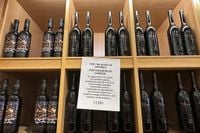Canadian shoppers and businesses are bracing for a wave of changes as the federal government prepares to lift retaliatory tariffs on a vast range of U.S. imports, effective September 1, 2025. The move, announced by Prime Minister Mark Carney on August 22, is expected to reduce costs on everyday goods, from orange juice to bourbon, but experts caution that the impact on prices may not be immediate—or as dramatic as some hope.
Prime Minister Carney, speaking at a press conference, laid out the government’s decision to match U.S. tariff exemptions for goods covered under the Canada-United States-Mexico Agreement (CUSMA). “Canada currently has the best trade deal with the United States. And while it’s different from what we had before, it’s still better than that of any other country,” Carney said, emphasizing that 85 percent of Canada-U.S. trade is now tariff-free. However, he was quick to note that tariffs on steel, aluminum, and autos will remain as Ottawa continues to negotiate with Washington on those contentious sectors.
The latest chapter in the ongoing tariff saga began in March 2025, when Canada slapped a 25 percent counter-tariff on $60 billion worth of American imports after the U.S. threatened a blanket 25 percent tax on all Canadian exports. Although the American threat was ultimately limited to non-CUSMA-compliant goods, the Canadian response hit a wide array of products—from food and alcohol to clothing and home goods. The U.S., for its part, raised tariffs on Canadian goods to 35 percent on August 1, escalating the trade tensions even further.
For Canadian families, the most immediate question is whether their grocery bills will finally shrink. According to Colin Mang, an associate economics professor at McMaster University, the overall effect of the tariffs on imported goods—including food—has been “fairly small.” As he explained to Yahoo Canada, “The typical family can expect a little bit of savings at the grocery store. Some of the prices for American-made stuff is going to come down, but it’s not going to be noticeable.” Mang added, “I think consumers will expect it, but will they go back to the old prices they had? Well, that remains to be seen... I’m not convinced that prices will go back to exactly where they were before the tariff war started. They’ll probably end up a little bit higher.”
Still, the timing of the tariff removal could offer some relief as Canada enters the fall and winter months, when domestic produce becomes scarce and reliance on U.S. fruits and vegetables spikes. In 2024 alone, Canada imported more than $4.5 billion in fruits and vegetables from the U.S., according to Trading Economics. The list of food products now exempt from retaliatory tariffs is extensive, including oranges, orange juice, berries, bread, butter, cheese, chocolate, coffee, eggs, poultry, rice, wheat, and yogurt, among dozens of others.
Brayden Halayko, manager of Downtown Family Foods in Winnipeg, told CBC News that his store and its customers have “felt the impact of tariffs for a number of months.” He cited “huge spikes in things like coffee, Campbell’s soup—all Campbell’s products— oranges and orange juice. Anything that would come from the United States.” Halayko said his store has been spending thousands of dollars more each month on U.S. goods due to tariffs, despite efforts to seek out cheaper, Canadian alternatives. “We’re doing our best to navigate and make sure costs aren’t too hard-hitting on the customers’ pockets, but there’s only so much we can do,” he said.
Experts like Sylvain Charlebois, a visiting scholar at McGill University specializing in food policy, are optimistic that prices for dry goods, pantry staples, coffee, and citrus fruits will drop. “We are expecting prices to drop in specific sections of the grocery store,” Charlebois said. “Dry goods, pantry goods, we’re expecting many products to drop in price. Coffee will be a big one [and] citrus fruits.” He also questioned the logic of tariffs on goods like coffee and oranges, noting, “We don’t have a coffee production sector to protect; same for oranges.”
Statistics Canada data backs up the pain felt by consumers: the price of oranges jumped from $3.81 per kilogram in January 2025 to $5.57 in June, while roasted or ground coffee climbed from $6.63 per 340 grams to $8.55 over the same period. But Charlebois cautioned that the “tariff effect” may not be fully muted until mid-October, as retailers work through existing inventory and adjust their pricing strategies.
The tariff removal’s reach extends well beyond food. Alcohol and tobacco products—including cider, gin, rum, tequila, whiskey, and wine—are now exempt, a change welcomed by both consumers and industry groups. The impact is especially significant for Kentucky bourbon, which has faced a tough road in Canada due to on-again, off-again tariffs and shifting consumer preferences. Senator Rand Paul of Kentucky described the industry’s struggles as a “triple whammy” of decreased alcohol consumption, industry oversupply, and trade barriers. “I think it’s going to be tough times for a while,” Paul said at a Greater Louisville Inc. event on August 26, as reported by The Courier Journal.
Chris Swonger, president and CEO of the Distilled Spirits Council of the United States, sees the Canadian move as a “positive step forward” but warns that uncertainty remains. Some Canadian provinces have yet to return American spirits to store shelves after months of boycotts, and it’s unclear how quickly consumers will return. Swonger estimates that Canadian provinces have lost over $500 million CAD in tax revenue by removing American distilled spirits from the market.
Personal care items such as makeup, soap, shampoo, and toilet paper are also on the list of goods now exempt from tariffs, as are clothing items—including sweaters, T-shirts, and footwear—and home goods like bed linens, kitchenware, and appliances. For major retailers like Walmart, Costco, and HomeSense, the changes could mean lower costs, though whether those savings are passed on to consumers remains up to individual companies.
Not everyone is planning to rush back to American products. Winnipeg shopper Dennis Evachewski told CBC he’ll “still try to get Canadian as much as possible because you want to support local as much as possible.” Others, like Bienvinido Jamoyot, are eager for the return of U.S. goods, saying, “Sometimes I prefer to buy a U.S. product because it’s better.”
Barry Prentice, director of the University of Manitoba’s Transport Institute, summed up the rationale behind the tariff rollback: “I think consumers in Canada were the only ones being affected by this. I think the notion was to try and put pressure on certain U.S. states to convince the president to change his mind, but I don’t think that’s going to work anyway, so why hurt ourselves?”
As Canada moves to end its trade war with the U.S. on many consumer goods, shoppers and retailers alike are watching closely. While relief may not be instant, and prices may not return to pre-tariff lows, the coming months will reveal whether this latest policy shift brings meaningful change—or just a modest reprieve—to Canadian wallets.


